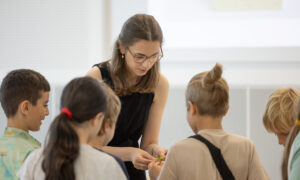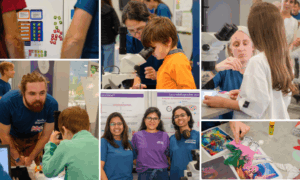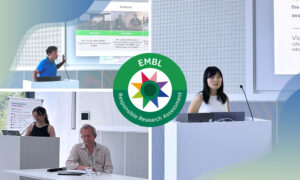
Nordic networks
Researchers are convening in Umeå, Sweden this week for the annual network meeting of the Nordic EMBL Partnership for Molecular Medicine. The Partnership – which has grown from scratch in 2008 to more than 40 research groups mostly led by young researchers – brings together the Danish Institute for Translational Neuroscience (DANDRITE), the Institute for Molecular Medicine Finland (FIMM), the Laboratory for Molecular Infection Medicine Sweden (MIMS), the Centre for Molecular Medicine Norway (NCMM) and EMBL with the shared goal of tailoring approaches to the benefit of patients. Ahead of the meeting, we caught up with NCMM Director and speaker of the Partnership Kjetil Taskén.

What are the key objectives?
The central goal is translational medicine – taking discoveries from the lab to the clinic to health benefits. There have already been significant improvements in healthcare as a result of translational research, but there is also huge potential to push forward and to do this better. Flagship projects increasingly incorporate large data sets from genomics, proteomics, biobanks, health registries, as well as information on communities. Since the partnership agreement was signed we have become a powerful force and have created excellent infrastructures, networks and training programmes geared towards tackling these research challenges. Collectively, we are focussed on enhancing the research enterprise so that patients can benefit quicker from advances, while at the same time facilitating highly ambitious blue-skies research that is crucial in making translational medicine happen.
Since the partnership agreement was signed we have become a powerful force and have created excellent infrastructures, networks and training programmes
Can you give some examples of creative flows in the partnership?
The partnership spans almost the entire research spectrum: human genomics and systems medicine (FIMM); infection and microbiome (MIMS); brain circuitry and neuronal disease (DANDRITE); and disease mechanisms (NCMM) – there are almost too many examples to choose from! One exciting area is the increasing use of tools, algorithms and other platforms to integrate genetic and molecular information with traditional clinical knowledge and tailor treatment to individual patients. Another is the development of elegant structural biology methods to better understand tricky elements such as membrane proteins and molecular transport. A third is the range of different microscopy technologies at different centres, which has led to some exciting joint research projects and dedicated training programmes. But there are many more. Our connections with EMBL are very important in this respect – we have adopted the EMBL model in terms of international recruitment and scientific reviews, which really increases quality at all levels, and we initiate valuable scientific exchanges, joint appointments, and symposia like the one here at Umeå.
How about the main challenges?
The partnership is spread across four different countries, which can create logistical challenges, as well as being quite young. But there have been ways to turn this to our advantage, especially with the addition of DANDRITE as the partnership’s fourth node in 2013 and the extension of the partnership agreement for another 10 years. We are focused on enhancing the cohesion that we have established thus far and further increasing our interactions with EMBL to improve our knowledge exchange and use of available infrastructures – as we grow we will see this happening more and more. Other priorities include enhancing connections with local research communities, as well as gaining more recognition beyond the world of science.
We are focused on enhancing the cohesion that we have established thus far and further increasing our interactions with EMBL
What is your own group focussed on?
Our group is interested in how signalling and signalling cues to the immune system regulate immune responses, specifically in diseases such as cancer and viral infections. Flow cytometry-based technologies are allowing us to understand signal networks and learn more about specific drug responses in individual patients, work that is carried out in collaboration with researchers at FIMM.
What do you do in your spare time if you have any?
I like cross-country skiing, hiking, reading, as well as trying my hand at some DIY.


